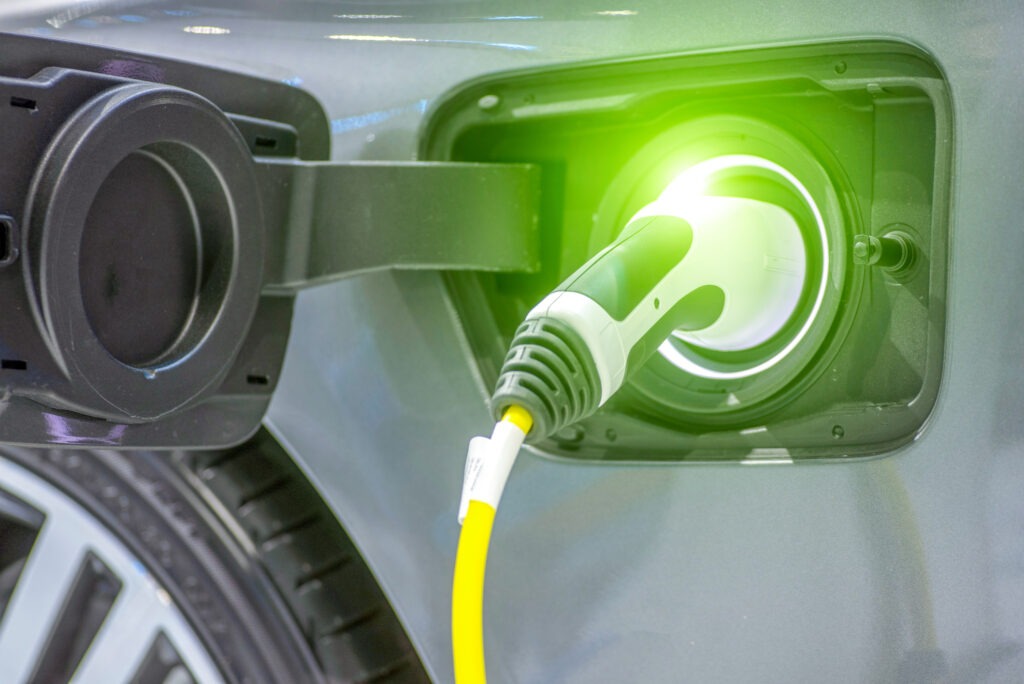US automotive market declines in June with software system disruption
26 June 2024

US new-vehicle sales slumped in June, with software system disruption impacting dealerships. In its latest forecast, J.D. Power analysed the new-car sales slump in the US automotive market in June and the market’s performance across the first half of the year.
Including retail and non-retail transactions, total US new-vehicle sales for June 2024 are projected to reach between a high of 1,336,800 units and a low of 1,273,600 units. This equates to a decline of 2.6% to 7.2% compared to the same period one year ago, when adjusted for selling days. This month has 26 selling days, the same as June 2023.
The range of figures is due to the impact of dealer software disruptions, which have made it difficult to gather exact data. This is due to the uncertainty about exactly when system outages will be resolved and what countermeasures dealers put in place to transact sales through to the close of the month.
The seasonally-adjusted annualised rate (SAAR) for total new-vehicle sales is expected to be between 14.7 and 15.4 million units. This is a drop of between 0.7 units and 1.4 million units year-on-year.
Retail sales of new-vehicles are expected to reach between 1,009,845 units and 1,073,000 units in June. This would result in a 2.5% to 8.2% decrease.
Growth in the first half
Total new-vehicle sales for the first half of 2024 are projected to finish between 7,794,500 units and 7,857,700 units. This would be a 0.4% to 1.2% increase from the first half of last year when adjusted for selling days.
The first half of 2024 had 154 selling days, two more than the same period one year ago. Comparing the same sales volume without adjusting for selling days translates to a jump of 1.7% to 2.5% from a year ago.
Across the first six months of the year, new-vehicle retail sales are projected to reach between 6,273,900 units and 6,337,000 units. This equates to a rise of 0.6% to 1.6% from the first half of 2023 on a selling day adjusted basis. Without the adjustment, this translates to a surge of 1.9% to 2.9% compared to the same period from one year ago.
Software system disruption
‘Because of the disruption to dealer software systems, June sales will not be reflective of actual consumer demand for new vehicles. Instead, a significant number of sales that would have occurred in June are now likely to occur in July,’ explained Thomas King, president of the data and analytics division at J.D. Power.
‘Prior to the disruption, the total sales forecast was tracking at 1.41 million units, so the effect of the disruption is significant. However, it will not affect overall demand in the long term. Sales will be delayed, but the majority will likely occur in July shortly after the situation is rectified and sales are being made despite system outages,’ said King.
‘Indeed, if there is one thing that the pandemic demonstrated to the automotive industry, it is that dealers are very adept at dealing with adversity and have been effective in rapidly identifying ways to deliver vehicles to buyers,’ he added.
Retail inventory is projected to finish around 1.8 million units, a 4.5% increase from May 2024 and a 41.6% jump from June 2023. Fleet mix is projected at 20.5%, up 0.6 percentage points (pp) from 12 months ago.
Higher retail sales, falling transactions
‘The average new-vehicle retail transaction price is declining compared with a year ago as manufacturer incentives rise, retailer profit margins decline and availability of lower-priced vehicles increases. Transaction prices are trending towards $44,857 (€41,980), down $1,372 or 3% from June 2023,’ stated King.
‘The combination of slightly higher retail sales and lower transaction prices means buyers are on track to spend nearly $44.6 billion on new vehicles this month. This is 6.5% lower than June 2023, but the fourth-highest June on record.
‘Total retailer profit per unit, which includes vehicles gross plus finance and insurance income, is expected to be $2,407, down 32.3% from June 2023.
‘Rising inventory is the primary factor behind the profit decline and fewer vehicles are selling above the manufacturer's suggested retail price (MSRP). So far in June, only 16.9% of new vehicles have been sold above MSRP, which is down from 34.9% in June 2023,’ King added.
‘Total aggregate retailer profit from new-vehicle sales for this month is projected to be $2.4 billion. This is a drop of 34.8% from June 2023.
‘Rising inventory means fewer vehicles are being pre-sold by retailers, with more shoppers able to buy directly off dealer lots. This month, J.D. Power forecasts that 32.9% of vehicles will sell within 10 days of arriving at the dealership, down from a peak of 58% in March 2022.
‘The average time a new vehicle remains in the dealer's possession before sale is expected to be 45 days, up from 28 days a year ago,’ he outlined.
Increasing incentive spending
‘Manufacturer discounts are expected to be similar to May (down $65 per unit) but have materially increased from a year ago. The average incentive spend per vehicle has grown 51.2% from June 2023 and is currently on track to reach $2,625.
‘Expressed as a percentage of MSRP, incentive spending is currently at 5.3%, an increase of 1.8pp from a year ago. Increased spending of the current model year is nearly offset by lower volumes of prior model year vehicles with higher spending.
‘One of the drivers of higher incentive spending from a year ago is the increased availability of lease deals, and leasing is growing accordingly. This month, leasing is expected to account for 22.7% of retail sales, up 2.7pp from June 2023,’ commented King.
‘After rising consistently during the past few years, average monthly loan payments are stabilising. The average monthly finance payment this month is on pace to be $727, down $1 from June 2023. The average interest rate for new-vehicle loans is expected to be 7%, the same as one year ago.
‘So far in June, average used-vehicle retail prices are $28,208, reflecting a decrease of 6.3% or $1,882 from a year ago. The decline in used-vehicle values is translating to lower trade-in equity for owners. This is now trending towards $7,770, which is down $1,552 from a year ago.
‘Looking forward to July, we expect the dealer software system disruptions to be rectified and most of the lost June sales recovered within the month. Also, a robust start to July in the US is expected due to the extended 4 July holiday weekend,’ he highlighted.
The Details
- Average incentive spending per unit in June is expected to reach $2,625, up from $1,736 in June 2023. Spending as a percentage of the average MSRP is expected to increase to 5.3%, up 1.8pp from June 2023.
- Average incentive spending per unit on trucks/SUVs in June is expected to be $2,707, up $908 from a year ago. Meanwhile, the average spending on cars is expected to be $2,263, up $765 from a year ago.
- Retail buyers are on pace to spend $44.6 billion on new vehicles, down $3.1 billion from June 2023.
- Trucks/SUVs are on pace to account for 81.3% of new vehicles in June.
- Fleet sales are expected to total 263,770 units in June, down 3.1% from June 2023 on a selling day-adjusted basis. Fleet volume is expected to account for 20.2% of total light-vehicle sales, up 0.4pp from a year ago.
- Average interest rates for new-vehicle loans are expected to be 7%, the same as one year ago.
Slow EV growth
‘Electric vehicle (EV) growth has been slow in the first half of the year. Although interest from new-vehicle shoppers is slightly up month over month, it is flatlined at about 25%,’ said Elizabeth Krear, vice president, electric vehicle practice at J.D. Power.
‘Monthly EV retail share is also unchanged compared with a year ago at 8.4%. EV availability and affordability have risen to 58% of market coverage, offering viable alternatives to gas-powered vehicles. With more options at competitive affordability, it begs the question, “Why is the pace of EV sales flat and what is the satisfaction as well as future intent of current EV owners?”
‘The J.D. Power 2024 U.S. Electric Vehicle Experience (EVX) Ownership Study shows that 96% of current BEV owners are likely to consider purchasing/leasing another BEV for their next purchase,’ she stated.
‘Looking deeper, only 20% of current BEV owners are likely to consider purchasing or leasing a gas-powered vehicle for their next purchase and 39% of current BEV owners are likely to consider purchasing/leasing a PHEV for their next purchase. This is positive news for the EV ecosystem.
‘It is notable, too, that 87% of current PHEV owners say they’re likely to consider purchasing/leasing another PHEV, and 66% say they are likely to consider stepping up to a BEV. Only 44% of PHEV owners say they are likely to consider a internal-combustion engine vehicle for their next purchase,’ Krear concluded.



